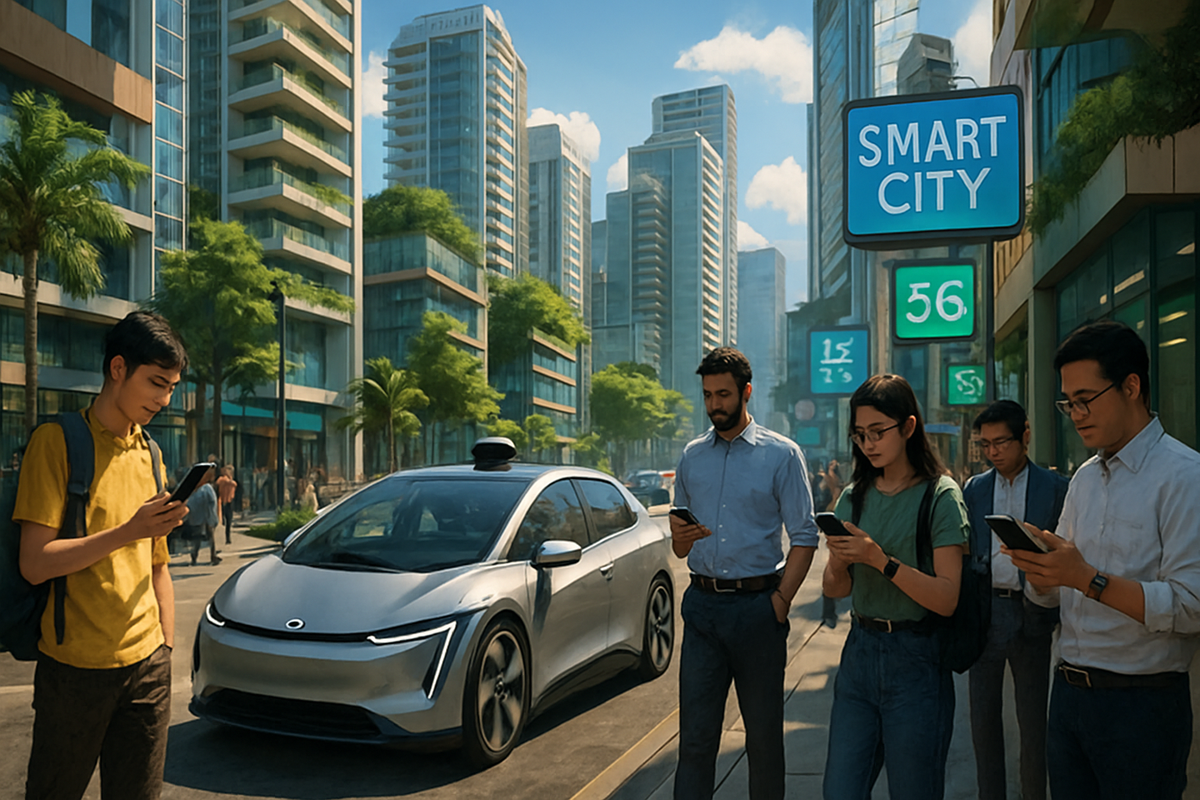The Rise of Autonomous Mobility in Southeast Asia: How Robotaxis and AI Shuttles Will Transform Urban Life by 2030
In 2030, Southeast Asia's urban jungles will buzz with autonomous robotaxis, reshaping our commutes and cities. Discover the evolving landscape of AI-powered mobility and why it’s more than just tech—it's the future of urban life.

Welcome to the Future: Robotaxis, AI Shuttles, and the Urban Jungle
Picture this: It’s 7:30 AM in Jakarta, 2030. The city is humming, but gone are the days of endless honking and bumper-to-bumper chaos. Instead, sleek, driverless robotaxis zip through dedicated lanes, while AI-powered shuttles glide commuters to work, coffee in hand and WiFi blazing. Sounds like sci-fi? Think again—Southeast Asia’s autonomous mobility revolution has already begun.
"WeRide and Grab’s partnership is more than a tech upgrade—it's a blueprint for how bustling Southeast Asian cities will move, connect, and thrive by 2030."
A Timeline: From Hype to Hyperloops (Well, Almost)
- 2025: WeRide secures a strategic equity investment from Grab, setting the stage for robotaxi and AI shuttle fleets across the region1.
- 2026: First wave of autonomous pilot programs roll out in Singapore, Kuala Lumpur, and Bangkok.
- 2027-2028: Regulatory frameworks mature; city planners designate smart lanes and dynamic pickup zones.
- 2029: Commuters in Manila and Ho Chi Minh City get their first taste of 24/7 autonomous ride-hailing.
- 2030: Robotaxis and AI shuttles reach scale, transforming daily commutes and urban landscapes.
Business Models: Who’s Driving (or Programming) Whom?
Let’s be honest: Southeast Asia is the world’s ultimate proving ground for shared mobility. High population density, smartphone ubiquity, and a love for all things communal (hello, food courts!) make it fertile territory for autonomous services. Here’s how the business models are evolving:
- Subscription Mobility: Unlimited rides for a flat monthly fee—your new Netflix, but for getting around.
- Dynamic Pricing: AI-powered fares that flex with demand, time, and even the weather. (Rainy season surge, anyone?)
- Mobility-as-a-Service (MaaS): Integrating robotaxis, shuttles, scooters, and trains into one seamless app. Goodbye, app clutter!
- Corporate Partnerships: Employers subsidize AI shuttle commutes to lure talent and reduce parking woes.
Urban Planning: Cities Get a Brain Upgrade
It’s not just about swapping drivers for algorithms. Autonomous mobility is forcing cities to rethink everything from curb space to data security:
- Smart Infrastructure: Expect more dedicated lanes, dynamic stop zones, and IoT-powered traffic management.
- Redesigning Public Spaces: With fewer private cars, parking lots morph into parks, pop-up markets, or—dare we dream—actual sidewalks you can walk on.
- Data-Driven Decision Making: City planners harness real-time mobility data to optimize routes, reduce congestion, and even predict potholes before your robotaxi hits them.
Consumer Readiness: Are We There Yet?
Will Southeast Asians trust a car with no human at the wheel? Early signals are promising. Surveys show high smartphone adoption and openness to new tech, especially among the region’s booming millennial and Gen Z populations. But challenges remain:
- Safety Concerns: Trust in AI is hard-won. Transparent safety records and real-world pilot programs will be key.
- Affordability: Pricing must beat (or at least match) the cost of owning a motorbike, the region’s current mobility king.
- Cultural Acceptance: Will folks still want to chat with their Grab driver or is silence now golden?
"Urban life in Southeast Asia is about to get a lot smarter, safer, and—let’s face it—a whole lot cooler."
What Sets Southeast Asia Apart?
Here’s the secret sauce: The region’s unique blend of economic dynamism, regulatory flexibility, and a can-do culture of adaptation. Cities here aren’t just copying Silicon Valley—they’re leapfrogging, blending old and new in ways that feel both familiar and futuristic.
- Regulatory Sandbox: Governments are quick to pilot, tweak, and scale what works.
- Young, Tech-Savvy Population: With over half the population under 30, change isn’t just accepted—it’s demanded.
- Economic Growth: Urbanization and rising incomes fuel investments in smart mobility and infrastructure.
The Road Ahead: Predictions & Actionable Insights
Ready to future-proof your commute (and maybe your investment portfolio)? Here’s what to watch:
- Robotaxi Expansion: Expect pilot programs in more cities and mass adoption by 2028-2030.
- Insurance & Safety Tech: New policies and gadgets tailored for AI-powered mobility.
- Urban Commuting Solutions: Apps that blend public, private, and autonomous transport into one tap.
- Travel & Local Discovery: AI shuttles will make exploring cities safer, greener, and more spontaneous.
Want to Keep Up (and Join the Conversation)?
Subscribe for free to our Funaix Insider newsletter and unlock smart news, exclusive perks, and the chance to comment on this article. Our blog’s comments are subscriber-only—because smart conversations deserve a smart community. It’s free (for now), and the future is waiting.
Sources:
1. Automotive World News Releases, August 2025




